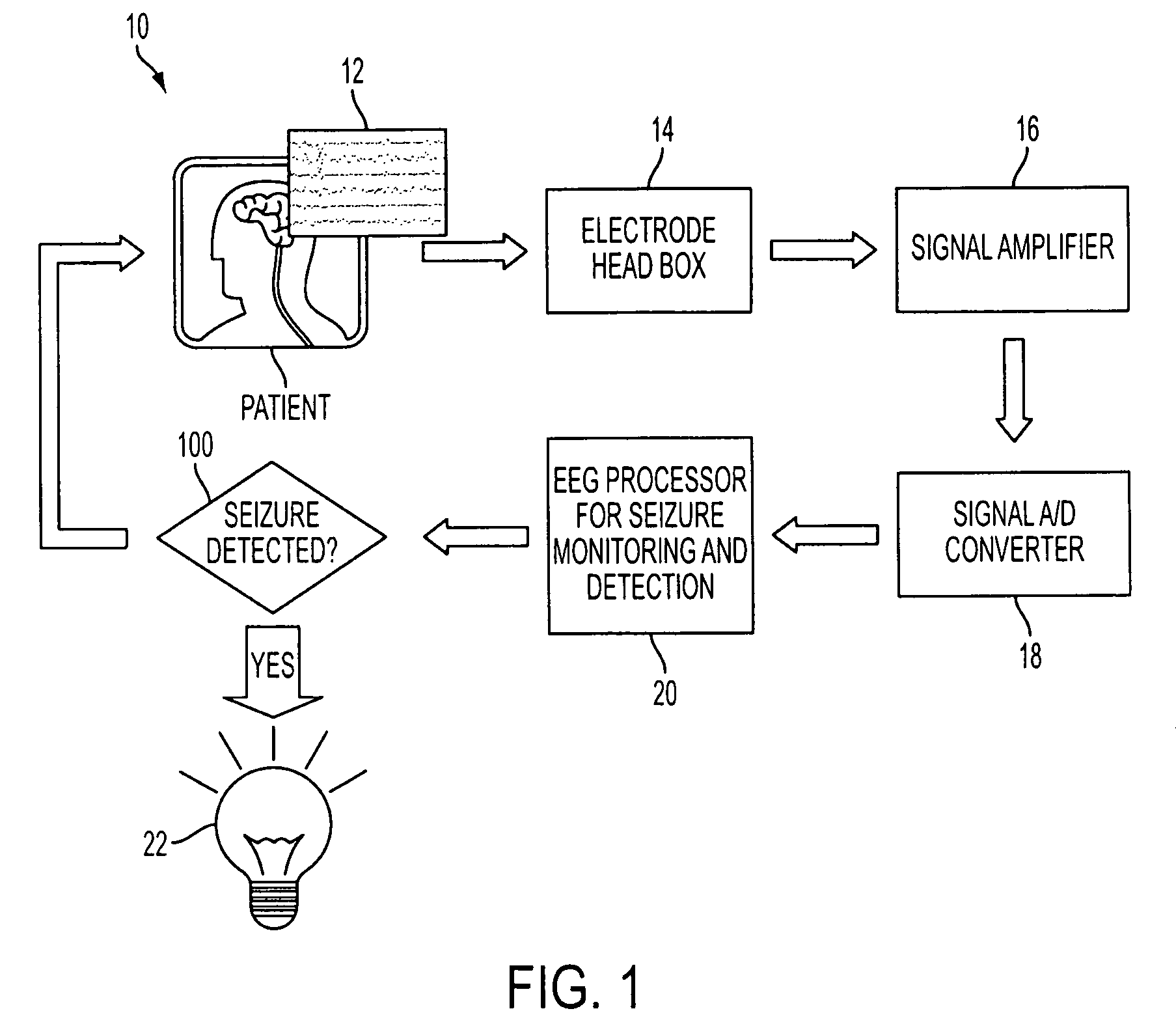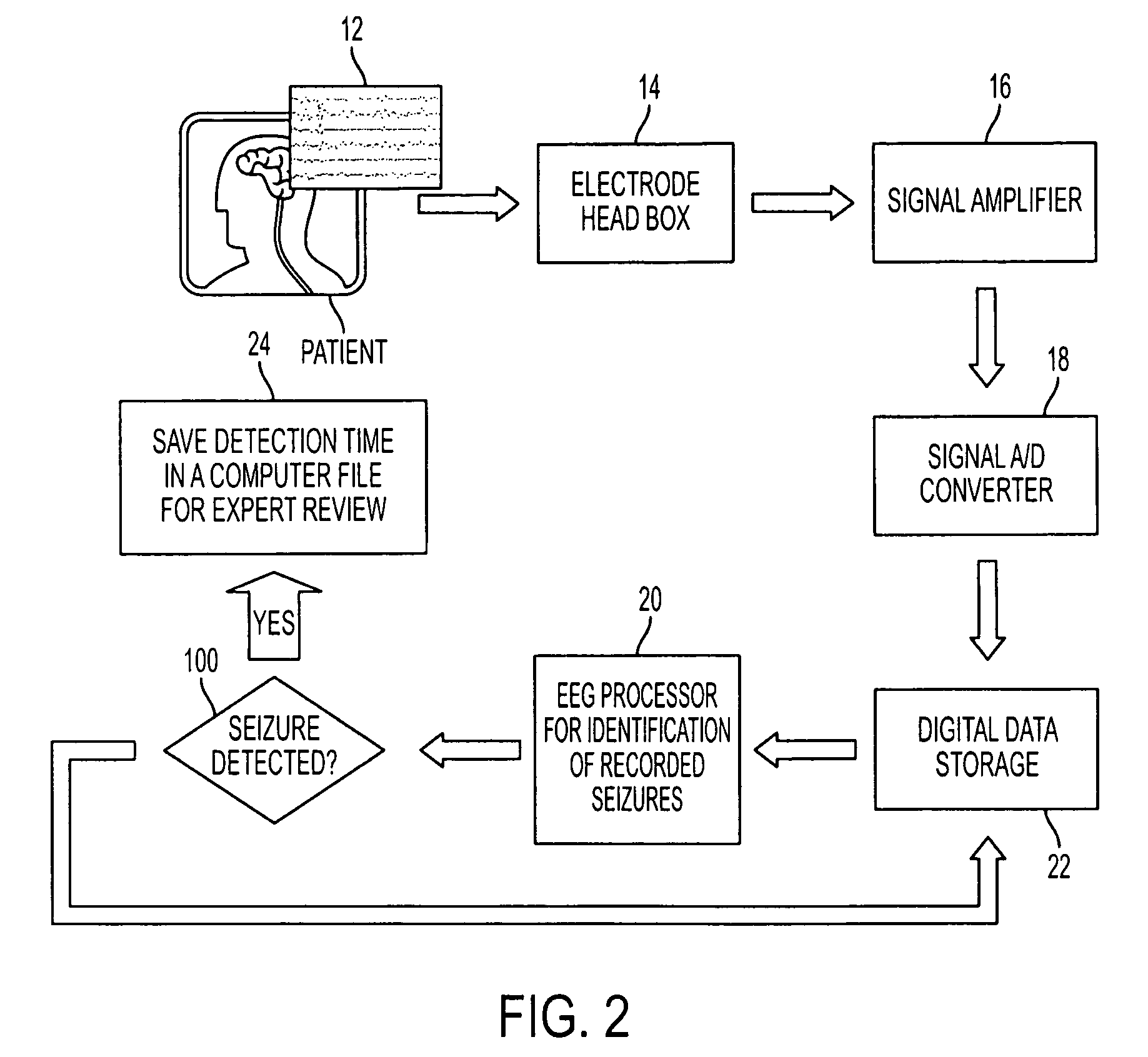System for seizure monitoring and detection
a seizure monitoring and detection system technology, applied in the field of seizure monitoring and detection system, can solve the problems of inability to detect seizures which are not manifested by such highly rhythmic patterns, inability to realize seizures, and inability to perform signal processing using conventional spectral analysis techniques, etc., to facilitate enhance the efficiency of the review process, and facilitate the effect of off-line review and analysis
- Summary
- Abstract
- Description
- Claims
- Application Information
AI Technical Summary
Benefits of technology
Problems solved by technology
Method used
Image
Examples
Embodiment Construction
[0024]The present invention overcomes many of the prior art problems associated with monitoring seizure activity and determining when seizures occur. The advantages, and other features of the systems and methods disclosed herein, will become more readily apparent to those having ordinary skill in the art from the following detailed description of certain preferred embodiments taken in conjunction with the drawings which set forth representative embodiments of the present invention.
[0025]Referring to FIG. 1, a schematic diagram of a real-time seizure monitoring and detection system (SMDS) 10 in accordance with the subject technology is shown. The SMDS 10 has electrodes (not explicitly shown) for capturing electrical signals 12 from the patient's brain in a known manner. It is envisioned that the electrodes would be placed on the patient's head according to the international 10-20 system shown in FIGS. 3A and 3B.
[0026]In FIG. 3A, a top view is shown and a left side view of the patient...
PUM
 Login to View More
Login to View More Abstract
Description
Claims
Application Information
 Login to View More
Login to View More - R&D
- Intellectual Property
- Life Sciences
- Materials
- Tech Scout
- Unparalleled Data Quality
- Higher Quality Content
- 60% Fewer Hallucinations
Browse by: Latest US Patents, China's latest patents, Technical Efficacy Thesaurus, Application Domain, Technology Topic, Popular Technical Reports.
© 2025 PatSnap. All rights reserved.Legal|Privacy policy|Modern Slavery Act Transparency Statement|Sitemap|About US| Contact US: help@patsnap.com



